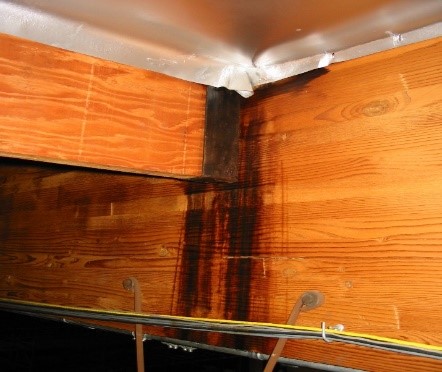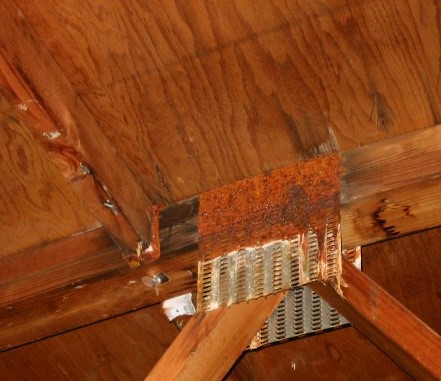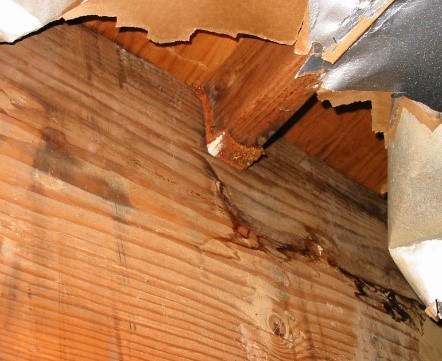Roof Condensation: What to Look for?
Roof damage from condensation is one of many structural problems that can occur and if left untreated, this condensation can cause serious structural problems. It is entirely possible to destroy the entire roof structure. What is the specific cause? Moisture! Condensation is caused by the rapid cooling of warmer air.
As the building heats up during the day and the roofing material (especially dark roofing) absorbs the sun’s rays, heat is created in the air cavity between the insulation and the roof. This area can achieve a temperature 50 to 70 degrees warmer than the rest of the building. Hot air increases the evaporation of the ambient water molecules, drawing moisture into the air cavity. Because of the insulation, the individual roof cells (the area between the foil and plywood roof, usually constructed of 2×4 sub-purlins) are not able to vent and dry out. When the building cools off, the cavity cools and the trapped water condenses and seeps into the wood roof members. Until corrected, the building cycles through this process day in and day out.
The following factors can intensify the condensation process:
Roof Leaks – Allows water to enter the building.
Building Construction – Lumber utilized in construction often has a moisture content of 19% or more. If it is not allowed to dry out before the insulation is installed, excessive condensation can occur.
Occupant Operations – Boilers, foam production, bakeries, and similar operations produce additional moisture in the roof cells. A tenant may induce condensation damage by sealing the vented skylights, closing the HVAC economizers, by preventing ventilation at the roof line, keeping the building closed up, or by building full height walls inside the structure. Some tenants install their own foil insulation or overload the roof from above, increasing the likelihood of condensation related damage. Extended vacancies leave a building un-vented and cause additional moisture buildup as well.
Do any of your commercial industrial properties suffer from roof condensation? Contact us, https://saundersseismic.com/contact/
What to look for when roof condensation occurs?
#1 Look for black streaks caused by iron in the purlin hangers.
#2 Gang nail plate stamped for trusses – rusting above the old foil line. These plates are very thin and stamped when made so they cannot withstand any rusting.
#3 Sub-purlin Hangers – These are made from an aluminum alloy and do not rust like metal hangers.
#4 Black streaks caused by iron in the GLB (Glue-Lam-Beam) hinge connection.



